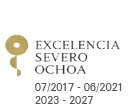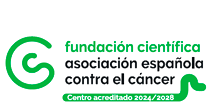 Ikerbasque Research Professor
Ikerbasque Research Professor 0000-0002-2216-1361
0000-0002-2216-1361Joaquín Castilla obtained his BSc in Pharmacy from the University of Navarra and continued his scientific pursuits by completing his PhD in Biological Sciences from Autonomous University of Madrid (UAM) and the National Centre for Biotechnology, Madrid, Spain.
After spending a couple of years at the National Centre for Biotechnology as an investigator on an EU project focused on designing new vaccines, Dr. Castilla began his research on Transmissible Spongiform Encephalopathies (prion diseases) in 1998 at the Centre for Animal Health (CISA-INIA). There, as a co-investigator on another European project, he started exploring new approaches to the diagnosis and control of these diseases. In 2003, he moved to Switzerland to work as a Research Scientist at the Serono Research Institute, continuing his work on prion diseases. Simultaneously, he served as an Assistant Professor at the University of Texas Medical Branch (2003-2006) and later at Scripps-Florida (2006-2009), where he led an independent research group.
Immediately after, in 2009, Dr. Castilla joined CIC bioGUNE as an Ikerbasque Research Professor and Group Leader of the Prion Research Lab. His laboratory focuses on developing in vitro and in vivo models to investigate prion propagation. Specifically, they study spontaneous prion misfolding, strain and species barrier phenomena in cell-free systems and animal models. Their goal is to elucidate the molecular mechanisms underlying prion formation and propagation, aiming to advance new diagnostic methods and therapeutic approaches against prion diseases.
Dr. Castilla has extensive experience in applying for and participating in the European Community, NIH (USA), and national projects. He has supervised 17 doctoral theses and is currently leading or co-leading another 5 theses in preparation. He's impactful research has yielded 120 peer-reviewed articles (H index: 43 – Times cited: 6900 – Cumulative Impact Factor: ~798), published in esteemed journals such as Cell, Nature Biotechnology, PNAS, PLoS Pathogens, and Science, among others, contributing significantly to our understanding of the molecular mechanisms underlying prion propagation.
Awards & recognitions
Research Award of the Colegio de Médicos de Álava (2018). Award of Young Scientific in Virology (Spanish Society of Virology) (2011).
Latest Publications
2024
2023
2022
Transmissible spongiform encephalopathies (TSEs) are lethal neurodegenerative diseases caused by prions, abnormal forms of a physiological protein that induce disease by inducing their aberrant conformation to the native counterpart. Understanding how prions cross species barriers and cause disease is crucial for developing diagnostic tools and treatments. The Prion Research Lab focuses on unraveling these mechanisms and has made significant strides in sensitive prion detection, validating the "protein-only" hypothesis, and developing methods to produce recombinant prions in vitro. Their work provides vital insights into prion diseases and informs efforts to combat them effectively.
Research line 1: Study of the molecular basis underlying prion diseases
To unveil the molecular mechanisms underlying prion pathogenic conversion, we investigate, among others, polyanionic cofactors' role in facilitating this spontaneous process. We aim to design and utilize tailored cofactors to elucidate how the innocuous PrP protein transforms into a self-replicating, disease-causing form, occurring in 85 % of diagnosed cases. Additionally, we produce diverse recombinant prion proteins to study their infectious capabilities, identifying sequences conducive or resistant to misfolding. Structural studies using cryo-electron microscopy on these recombinant prion strains aim to decipher how distinct structural features correlate with their biological characteristics in animal models.
Research line 2: Development of new approaches for the treatment and diagnosis of prion diseases
Our central goal involves developing methods to detect prions in urine and other easily accessible samples as disease biomarkers for individuals with prion-related mutations. Simultaneously, we are exploring new therapeutic avenues by evaluating potential anti-prion compounds and developing gene therapy strategies using dominant negative proteins to inhibit prion propagation.
Research line 3: Research on other neurodegenerative disorders related to protein misfolding
Our research extends to other neurodegenerative disorders associated with protein misfolding. Recent discoveries revealing shared molecular mechanisms between prion diseases and conditions like Parkinson’s disease, synucleinopathies, Alzheimer’s disease, and Frontotemporal Dementia have prompted our group to apply tools initially developed for prion research to these disorders. Specifically, techniques for detecting misfolded proteins are being adapted for diagnostic purposes across these conditions.
Collaborations
Dr. Castilla’s group collaborates with over 20 international and national research teams to advance scientific boundaries. Internationally, they partner with esteemed institutions such as the Prion Research Centre at the University of Colorado, the Cell Biology Department at Boston University, and the Neuropathology Department at the University Hospital in Zurich. Nationally, they collaborate with institutions including IRTA-CReSA in Barcelona, the University of Salamanca, CiMUS Research Centre at the University of Santiago de Compostela, and the Veterinary School at the University of Zaragoza. They also work with hospitals such as Hospital Clínic de Barcelona, Marqués de Valdecilla in Santander, and leading Basque health research institutes BioDonostia, BioAraba, and BioBizkaia. Additionally, Dr. Castilla closely engages with the Spanish Foundation for Prion Diseases to understand patient and family needs.
Links
Spanish Foundation for Prion Diseases: https://fundacionprionicas.org/
-
Cristina Sampedro Torres-Quevedo
-
Carlos Miguel Diaz Dominguez
TECHNICIANS / DOCTORAL CANDIDATES -
Josu Galarza Ahumada
-
Maitena San Juan Ansoleaga
-
Eva Fernández Muñoz
Fundación Tatiana Pérez de Guzmán el Bueno Predoctoral Fellow -
Nuno Filipe Coutinho Gonçalves Anjo
-
Patricia Piñeiro
Members
POSTDOCTORAL RESEARCHERLatest Publications
Pedigree analysis and genetic inheritance of fatal familial insomnia (FFI) in a Portuguese multigenerational family
Correia, AD; Laginha, I; Guimaraes, S; Dittmar, K; Schmitz, M; Castilla, J; Zerr, I; Correia, SD;
JOURNAL OF NEUROLOGY
2025-10-01
Effect of primary structural variation on cervid prion protein in flexibility, stability, and spontaneous misfolding propensity
Díaz-Domínguez, CM; Eraña, H; Peccati, F; Vidal, E; Charco, JM; Sampedro-Torres-Quevedo, C; Pérez-Castro, MA; Lorenzo, NL; Giler, S; Tellingg, GC; Geijo, M; Requena, JR; Jiménez-Osés, G; Castilla, ...
NEUROBIOLOGY OF DISEASE
2025-06-18
Characterization of prion strains and peripheral prion infectivity patterns in E200K genetic CJD patients
Barrio, T; Douet, JY; Záková, D; Eraña, H; Huor, A; Cassard, H; Alzuguren, O; Lugan, S; Aron, N; Peran, P; Castilla, J; Andréoletti, O;
ACTA NEUROPATHOLOGICA
2025-06-16
A comprehensive phylogeny of mammalian PRNP gene reveals no influence of prion misfolding propensity on the evolution of this gene
Sampedro-Torres-Quevedo, C; Eraña, H; Charco, JM; Díaz-Domínguez, CM; San-Juan-Ansoleaga, M; Fernández-Muñoz, E; Gonçalves-Anjo, N; Galarza-Ahumada, J; Cortazar, AR; Nespolo, RF; Quintero-Galvis, ...
PLOS PATHOGENS
2025-06-01
Conservation of strain properties of bank vole-adapted chronic wasting disease in the absence of glycosylation and membrane anchoring
Vidal, E; Eraña, H; Charco, JM; Lorenzo, NL; Giler, S; Ordóñez, M; Fernández-Munoz, E; San-Juan-Ansoleaga, M; Telling, GC; Sánchez-Martín, MA; Geijo, M; Requena, JR; Castilla, J;
NEUROBIOLOGY OF DISEASE
2025-04-18
Cofactors facilitate bona fide prion misfolding in vitro but are not necessary for the infectivity of recombinant murine prions
Pérez-Castro, MA; Eraña, H; Vidal, E; Charco, JM; Lorenzo, NL; Gonçalves-Anjo, N; Galarza-Ahumada, J; Díaz-Domínguez, CM; Piñeiro, P; González-Miranda, E; Giler, S; Telling, G; Sánchez-Martín, ...
PLOS PATHOGENS
2025-01-01
Isolation of infectious, oligomeric prions from human and animal prion diseases
Vanni, I; Rathod, V; Pirisinu, L; Marcon, S; Esposito, E; Di Bari, MA; Riccardi, G; DAgostino, C; Giovannelli, M; Erana, H; Igel, A; Agrimi, U; Beringue, V; Castilla, J; Requena, J; Rezaei, ...
PRION
2024-10-31
Genome-wide CRISPR activation screen identifies BMP signalling pathway as mediator of prion uptake by cells
De Cecco, E; Mariutti, G; Caredio, D; Erana, H; Yin, JA; Sellitto, S; Castilla, J; Aguzzi, A;
PRION
2024-10-31
Prion Neurotoxic Pathways
Harris, DA; Gatdula, JRP; Le, NT; Guillen, JAA; Mercer, RCC; Vultaggio, JS; Emili, A; Eraña, H; Castilla, J;
PRION
2024-10-31
Decoding PrP misfolding: learning from nature to design the future
Eraña, H; Sampedro-Torres-Quevedo, C; Charco, JM; Díaz-Domínguez, CM; Peccati, F; San-Juan-Ansoleaga, M; Vidal, E; Gonçalves-Anjo, N; Pérez-Castro, MA; González-Miranda, E; Piñeiro, P; Fernández-Veiga, ...
PRION
2024-10-31
Classical BSE dismissed as the cause of CWD in Norwegian red deer despite strain similarities between both prion agents
Marín-Moreno, A; Benestad, SL; Barrio, T; Pirisinu, L; Espinosa, JC; Tran, L; Huor, A; Di Bari, MA; Eraña, H; Maddison, B; DAgostino, C; Fernández-Borges, N; Canoyra, S; Jerez-Garrido, N; Castilla, ...
VETERINARY RESEARCH
2024-05-15
A Protein Misfolding Shaking Amplification-based method for the spontaneous generation of hundreds of bona fide prions
Erana, H; Sampedro-Torres-Quevedo, C; Charco, JM; Diaz-Dominguez, CM; Peccati, F; San-Juan-Ansoleaga, M; Vidal, E; Goncalves-Anjo, N; Perez-Castro, MA; Gonzalez-Miranda, E; Pineiro, P; Fernandez-Veiga, ...
NATURE COMMUNICATIONS
2024-03-08
A tetracationic porphyrin with dual anti-prion activity
Masone, A; Zucchelli, C; Caruso, E; Lavigna, G; Eraña, H; Giachin, G; Tapella, L; Comerio, L; Restelli, E; Raimondi, I; Elezgarai, SR; De Leo, F; Quilici, G; Taiarol, L; Oldrati, M; Lorenzo, ...
ISCIENCE
2023-09-15
Understanding the key features of the spontaneous formation of bona fide prions through a novel methodology that enables their swift and consistent generation
Eraña, H; Díaz-Domínguez, CM; Charco, JM; Vidal, E; González-Miranda, E; Pérez-Castro, MA; Piñeiro, P; López-Moreno, R; Sampedro-Torres-Quevedo, C; Fernández-Veiga, L; Tasis-Galarza, J; Lorenzo, ...
ACTA NEUROPATHOLOGICA COMMUNICATIONS
2023-09-07
Analysis of a large case series of fatal familial insomnia to determine tests with the highest diagnostic value
Kortazar-Zubizarreta, I; Eraña, H; Pereda, A; Charco, JM; Manero-Azua, A; Ruiz-Onandi, R; Aguirre, U; Gonzalez-Chinchon, G; de Nanclares, GP; Castilla, J; Basque Prionopathies Study Grp;
JOURNAL OF NEUROPATHOLOGY AND EXPERIMENTAL NEUROLOGY
2023-01-20
An optimized Western blot assay provides a comprehensive assessment of the physiological endoproteolytic processing of the prion protein
Vanni, I; Iacobone, F; DAgostino, C; Giovannelli, M; Pirisinu, L; Altmeppen, HC; Castilla, J; Torres, JM; Agrimi, U; Nonno, R;
JOURNAL OF BIOLOGICAL CHEMISTRY
2023-01-18
Bona fide atypical scrapie faithfully reproduced for the first time in a rodent model
Vidal, E; Sánchez-Martín, MA; Eraña, H; Lázaro, SP; Pérez-Castro, MA; Otero, A; Charco, JM; Marín, B; López-Moreno, R; Díaz-Domínguez, CM; Geijo, M; Ordóñez, M; Cantero, G; di Bari, M; Lorenzo, ...
ACTA NEUROPATHOLOGICA COMMUNICATIONS
2022-12-13
Glycans are not necessary to maintain the pathobiological features of bovine spongiform encephalopathy
Otero, A; Barrio, T; Eraña, H; Charco, JM; Betancor, M; Díaz-Domínguez, CM; Marín, B; Andréoletti, O; Torres, JM; Kong, QZ; Badiola, JJ; Bolea, R; Castilla, J;
PLOS PATHOGENS
2022-10-01
Blood β-Synuclein and Neurofilament Light Chain During the Course of Prion Disease
Halbgebauer, S; Abu-Rumeileh, S; Oeckl, P; Steinacker, P; Roselli, F; Wiesner, D; Mammana, A; Beekes, M; Kortazar-Zubizarreta, I; de Nanclares, GP; Capellari, S; Giese, A; Castilla, J; Ludolph, ...
NEUROLOGY
2022-04-05
Description of the first Spanish case of Gerstmann-Straussler-Scheinker disease with A117V variant: clinical, histopathological and biochemical characterization
Eraña, H; San Millán, B; Díaz-Domínguez, CM; Charco, JM; Rodríguez, R; Viéitez, I; Pereda, A; Yañez, R; Geijo, M; Navarro, C; de Nanclares, GP; Teijeira, S; Castilla, J;
JOURNAL OF NEUROLOGY
2022-03-16





